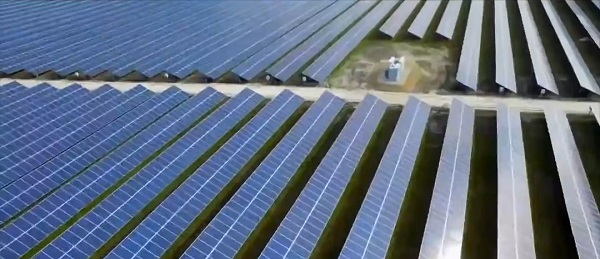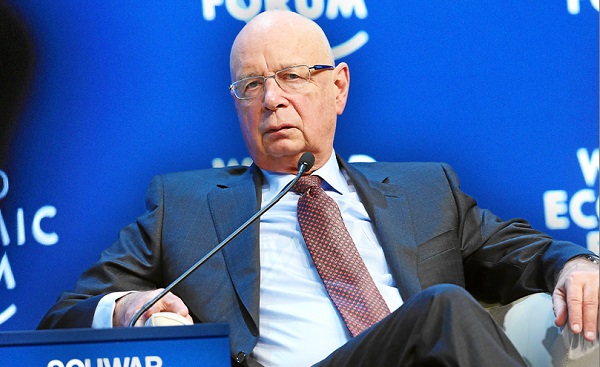Business
ESG Is Collapsing And Net Zero Is Going With It


From the Daily Caller News Foundation
By David Blackmon
The chances of achieving the goal of net-zero by 2050 are basically net zero
Just a few years ago, ESG was all the rage in the banking and investing community as globalist governments in the western world focused on a failing attempt to subsidize an energy transition into reality. The strategy was to try to strangle fossil fuel industries by denying them funding for major projects, with major ESG-focused institutional investors like BlackRock and State Street, and big banks like J.P. Morgan and Goldman Sachs leveraging their control of trillions of dollars in capital to lead the cause.
But a funny thing happened on the way to a green Nirvana: It turned out that the chosen rent-seeking industries — wind, solar and electric vehicles — are not the nifty plug-and-play solutions they had been cracked up to be.
Even worse, the advancement of new technologies and increased mining of cryptocurrencies created enormous new demand for electricity, resulting in heavy new demand for finding new sources of fossil fuels to keep the grid running and people moving around in reliable cars.
In other words, reality butted into the green narrative, collapsing the foundations of the ESG movement. The laws of physics, thermodynamics and unanticipated consequences remain laws, not mere suggestions.
Making matters worse for the ESG giants, Texas and other states passed laws disallowing any of these firms who use ESG principles to discriminate against their important oil, gas and coal industries from investing in massive state-governed funds. BlackRock and others were hit with sanctions by Texas in 2023. More recently, Texas and 10 other states sued Blackrock and other big investment houses for allegedly violating anti-trust laws.
As the foundations of the ESG movement collapse, so are some of the institutions that sprang up around it. The United Nations created one such institution, the “Net Zero Asset Managers Initiative,” whose participants maintain pledges to reach net-zero emissions by 2050 and adhere to detailed plans to reach that goal.
The problem with that is there is now a growing consensus that a) the forced march to a green energy transition isn’t working and worse, that it can’t work, and b) the chances of achieving the goal of net-zero by 2050 are basically net zero. There is also a rising consensus among energy companies of a pressing need to prioritize matters of energy security over nebulous emissions reduction goals that most often constitute poor deployments of capital. Even as the Biden administration has ramped up regulations and subsidies to try to force its transition, big players like ExxonMobil, Chevron, BP, and Shell have all redirected larger percentages of their capital budgets away from investments in carbon reduction projects back into their core oil-and-gas businesses.
The result of this confluence of factors and events has been a recent rush by big U.S. banks and investment houses away from this UN-run alliance. In just the last two weeks, the parade away from net zero was led by major banks like Goldman Sachs, Morgan Stanley, Citigroup, Bank of America, Wells Fargo, and, most recently, JP Morgan. On Thursday, the New York Post reported that both BlackRock and State Street, a pair of investment firms who control trillions of investor dollars (BlackRock alone controls more than $10 trillion) are on the brink of joining the flood away from this increasingly toxic philosophy.
In June, 2023, BlackRock CEO Larry Fink made big news when told an audience at the Aspen Ideas Festival in Aspen, Colorado that he is “ashamed of being part of this [ESG] conversation.” He almost immediately backed away from that comment, restating his dedication to what he called “conscientious capitalism.” The takeaway for most observers was that Fink might stop using the term ESG in his internal and external communications but would keep right on engaging in his discriminatory practices while using a different narrative to talk about it.
But this week’s news about BlackRock and the other big firms feels different. Much has taken place in the energy space over the last 18 months, none of it positive for the energy transition or the net-zero fantasy. Perhaps all these big banks and investment funds are awakening to the reality that it will take far more than devising a new way of talking about the same old nonsense concepts to repair the damage that has already been done to the world’s energy system.
David Blackmon is an energy writer and consultant based in Texas. He spent 40 years in the oil and gas business, where he specialized in public policy and communications.
Bjorn Lomborg
Net zero’s cost-benefit ratio is crazy high

From the Fraser Institute
The best academic estimates show that over the century, policies to achieve net zero would cost every person on Earth the equivalent of more than CAD $4,000 every year. Of course, most people in poor countries cannot afford anywhere near this. If the cost falls solely on the rich world, the price-tag adds up to almost $30,000 (CAD) per person, per year, over the century.
Canada has made a legal commitment to achieve “net zero” carbon emissions by 2050. Back in 2015, then-Prime Minister Trudeau promised that climate action will “create jobs and economic growth” and the federal government insists it will create a “strong economy.” The truth is that the net zero policy generates vast costs and very little benefit—and Canada would be better off changing direction.
Achieving net zero carbon emissions is far more daunting than politicians have ever admitted. Canada is nowhere near on track. Annual Canadian CO₂ emissions have increased 20 per cent since 1990. In the time that Trudeau was prime minister, fossil fuel energy supply actually increased over 11 per cent. Similarly, the share of fossil fuels in Canada’s total energy supply (not just electricity) increased from 75 per cent in 2015 to 77 per cent in 2023.
Over the same period, the switch from coal to gas, and a tiny 0.4 percentage point increase in the energy from solar and wind, has reduced annual CO₂ emissions by less than three per cent. On that trend, getting to zero won’t take 25 years as the Liberal government promised, but more than 160 years. One study shows that the government’s current plan which won’t even reach net-zero will cost Canada a quarter of a million jobs, seven per cent lower GDP and wages on average $8,000 lower.
Globally, achieving net-zero will be even harder. Remember, Canada makes up about 1.5 per cent of global CO₂ emissions, and while Canada is already rich with plenty of energy, the world’s poor want much more energy.
In order to achieve global net-zero by 2050, by 2030 we would already need to achieve the equivalent of removing the combined emissions of China and the United States — every year. This is in the realm of science fiction.
The painful Covid lockdowns of 2020 only reduced global emissions by about six per cent. To achieve net zero, the UN points out that we would need to have doubled those reductions in 2021, tripled them in 2022, quadrupled them in 2023, and so on. This year they would need to be sextupled, and by 2030 increased 11-fold. So far, the world hasn’t even managed to start reducing global carbon emissions, which last year hit a new record.
Data from both the International Energy Agency and the US Energy Information Administration give added cause for skepticism. Both organizations foresee the world getting more energy from renewables: an increase from today’s 16 per cent to between one-quarter to one-third of all primary energy by 2050. But that is far from a transition. On an optimistically linear trend, this means we’re a century or two away from achieving 100 percent renewables.
Politicians like to blithely suggest the shift away from fossil fuels isn’t unprecedented, because in the past we transitioned from wood to coal, from coal to oil, and from oil to gas. The truth is, humanity hasn’t made a real energy transition even once. Coal didn’t replace wood but mostly added to global energy, just like oil and gas have added further additional energy. As in the past, solar and wind are now mostly adding to our global energy output, rather than replacing fossil fuels.
Indeed, it’s worth remembering that even after two centuries, humanity’s transition away from wood is not over. More than two billion mostly poor people still depend on wood for cooking and heating, and it still provides about 5 per cent of global energy.
Like Canada, the world remains fossil fuel-based, as it delivers more than four-fifths of energy. Over the last half century, our dependence has declined only slightly from 87 per cent to 82 per cent, but in absolute terms we have increased our fossil fuel use by more than 150 per cent. On the trajectory since 1971, we will reach zero fossil fuel use some nine centuries from now, and even the fastest period of recent decline from 2014 would see us taking over three centuries.
Global warming will create more problems than benefits, so achieving net-zero would see real benefits. Over the century, the average person would experience benefits worth $700 (CAD) each year.
But net zero policies will be much more expensive. The best academic estimates show that over the century, policies to achieve net zero would cost every person on Earth the equivalent of more than CAD $4,000 every year. Of course, most people in poor countries cannot afford anywhere near this. If the cost falls solely on the rich world, the price-tag adds up to almost $30,000 (CAD) per person, per year, over the century.
Every year over the 21st century, costs would vastly outweigh benefits, and global costs would exceed benefits by over CAD 32 trillion each year.
We would see much higher transport costs, higher electricity costs, higher heating and cooling costs and — as businesses would also have to pay for all this — drastic increases in the price of food and all other necessities. Just one example: net-zero targets would likely increase gas costs some two-to-four times even by 2030, costing consumers up to $US52.6 trillion. All that makes it a policy that just doesn’t make sense—for Canada and for the world.
Business
‘Great Reset’ champion Klaus Schwab resigns from WEF

From LifeSiteNews
Schwab’s World Economic Forum became a globalist hub for population control, radical climate agenda, and transhuman ideology under his decades-long leadership.
Klaus Schwab, founder of the World Economic Forum and the face of the NGO’s elitist annual get-together in Davos, Switzerland, has resigned as chair of WEF.
Over the decades, but especially over the past several years, the WEF’s Davos annual symposium has become a lightning rod for conservative criticism due to the agendas being pushed there by the elites. As the Associated Press noted:
Widely regarded as a cheerleader for globalization, the WEF’s Davos gathering has in recent years drawn criticism from opponents on both left and right as an elitist talking shop detached from lives of ordinary people.
While WEF itself had no formal power, the annual Davos meeting brought together many of the world’s wealthiest and most influential figures, contributing to Schwab’s personal worth and influence.
Schwab’s resignation on April 20 was announced by the Geneva-based WEF on April 21, but did not indicate why the 88-year-old was resigning. “Following my recent announcement, and as I enter my 88th year, I have decided to step down from the position of Chair and as a member of the Board of Trustees, with immediate effect,” Schwab said in a brief statement. He gave no indication of what he plans to do next.
Schwab founded the World Economic Forum – originally the European Management Forum – in 1971, and its initial mission was to assist European business leaders in competing with American business and to learn from U.S. models and innovation. However, the mission soon expanded to the development of a global economic agenda.
Schwab detailed his own agenda in several books, including The Fourth Industrial Revolution (2016), in which he described the rise of a new industrial era in which technologies such artificial intelligence, gene editing, and advanced robotics would blur the lines between the digital, physical, and biological worlds. Schwab wrote:
We stand on the brink of a technological revolution that will fundamentally alter the way we live, work, and relate to one another. In its scale, scope, and complexity, the transformation will be unlike anything humankind has experienced before. We do not yet know just how it will unfold, but one thing is clear: the response to it must be integrated and comprehensive, involving all stakeholders of the global polity, from the public and private sectors to academia and civil society …
The Fourth Industrial Revolution, finally, will change not only what we do but also who we are. It will affect our identity and all the issues associated with it: our sense of privacy, our notions of ownership, our consumption patterns, the time we devote to work and leisure, and how we develop our careers, cultivate our skills, meet people, and nurture relationships. It is already changing our health and leading to a “quantified” self, and sooner than we think it may lead to human augmentation.
How? Microchips implanted into humans, for one. Schwab was a tech optimist who appeared to heartily welcome transhumanism; in a 2016 interview with France 24 discussing his book, he stated:
And then you have the microchip, which will be implanted, probably within the next ten years, first to open your car, your home, or to do your passport, your payments, and then it will be in your body to monitor your health.
In 2020, mere months into the pandemic, Schwab published COVID-19: The Great Reset, in which he detailed his view of the opportunity presented by the growing global crisis. According to Schwab, the crisis was an opportunity for a global reset that included “stakeholder capitalism,” in which corporations could integrate social and environmental goals into their operations, especially working toward “net-zero emissions” and a massive transition to green energy, and “harnessing” the Fourth Industrial Revolution, including artificial intelligence and automation.
Much of Schwab’s personal wealth came from running the World Economic Forum; as chairman, he earned an annual salary of 1 million Swiss francs (approximately $1 million USD), and the WEF was supported financially through membership fees from over 1,000 companies worldwide as well as significant contributions from organizations such as the Bill & Melinda Gates Foundation. Vice Chairman Peter Brabeck-Letmathe is now serving as interim chairman until his replacement has been selected.
-

 International1 day ago
International1 day agoPope Francis has died aged 88
-

 International1 day ago
International1 day agoJD Vance was one of the last people to meet Pope Francis
-

 2025 Federal Election18 hours ago
2025 Federal Election18 hours agoHow Canada’s Mainstream Media Lost the Public Trust
-

 International1 day ago
International1 day agoPope Francis Dies on Day after Easter
-

 2025 Federal Election18 hours ago
2025 Federal Election18 hours agoOttawa Confirms China interfering with 2025 federal election: Beijing Seeks to Block Joe Tay’s Election
-

 2025 Federal Election18 hours ago
2025 Federal Election18 hours agoReal Homes vs. Modular Shoeboxes: The Housing Battle Between Poilievre and Carney
-

 COVID-1918 hours ago
COVID-1918 hours agoNearly Half of “COVID-19 Deaths” Were Not Due to COVID-19 – Scientific Reports Journal
-

 2025 Federal Election17 hours ago
2025 Federal Election17 hours agoPOLL: Canadians want spending cuts








